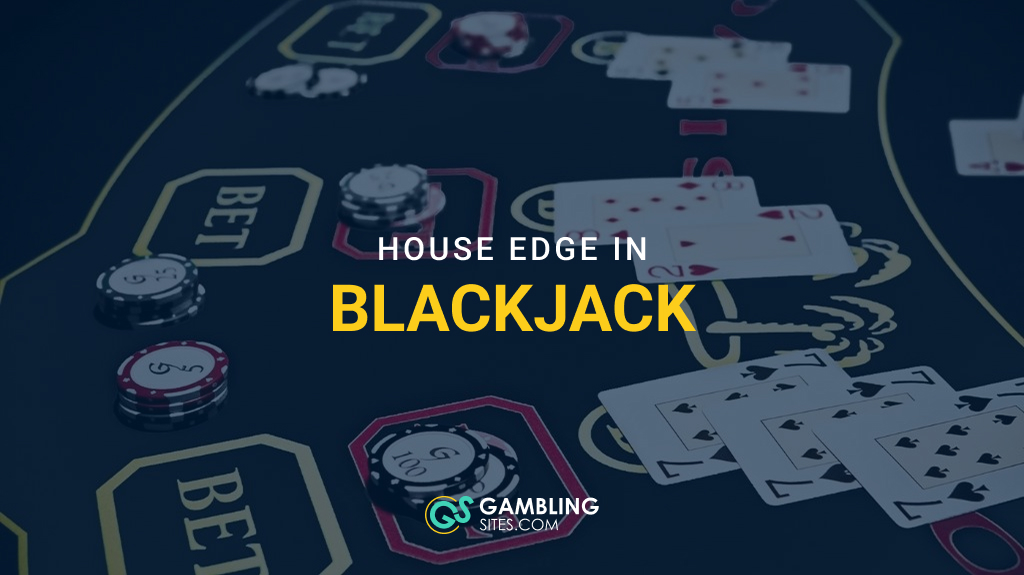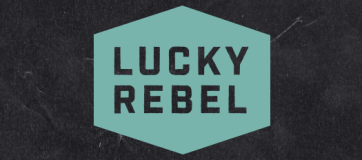Last Updated August 26, 2025 12:31 pm PDT
Share:
The house edge in blackjack gives the casino an advantage over time, but you can cut it down by understanding how it works. This guide covers what the house edge is, what rule variations affect it, and how to reduce the casino’s advantage playing blackjack.
What is Blackjack House Edge?
The house edge in blackjack refers to a numerical advantage the casino (house) has over the player. A typical blackjack house edge is 0.5%, which means that the house expects to earn $0.50 for every $100 that players wager.
Part of this edge comes from the fact that the dealer plays last in blackjack, which allows the player to go bust before the dealer has the chance to. The edge is also affected by house rules that can tip the advantage towards the casino, such as whether the dealer hits or stands on a Soft 17, and the number of decks used.
How Rules Impact the House Edge in Blackjack
Different blackjack variations have numerous rules that affect the house edge, both positively and negatively, including the following:
Dealer Soft 17
Whether or not the dealer can hit on Soft 17s affects the house edge. A Soft 17 is a 17 with an Ace, which counts as either 1 or 11. This prevents the dealer from going over, since if they draw a card higher than 4 the Ace is counted as a 1. Some games allow dealers to stand on Soft 17s, while others require them to hit.
Even though the dealer seems more likely to bust by hitting on 17, when they don’t their hand advantage improves slightly. Blackjack hands in which the dealer hits on a Soft 17 have a 0.2% higher house edge than when they stand.
Single Deck vs. Multiple Decks
The more decks that are used in a blackjack game, the more the house edge increases. While this may seem surprising since the ratio of high and low cards is unchanged, the likelihood of getting a blackjack is reduced by the increase of decks.
For example: Say you’re dealt an Ace in single-deck blackjack. You have a 31.7% chance of hitting blackjack when you’re dealt an Ace in single deck games, since 16 of the remaining 51 cards are worth 10 (16 ÷ 51 = 31.7%).
But those odds drop to 30.8% if you’re playing eight-deck blackjack, since 128 of the remaining 415 cards are worth 10 (128 ÷ 415 = 30.8%).
While this only represents a 0.9% increase in house edge, over the long run it can add up to a lot of money.
Splitting Options
The more flexible you can be when splitting hands, the more you’re able to diminish the house edge in blackjack. Splitting a favorable pair gives you two strong hands to work with, reducing the house edge between 0.1% and 0.2% in the process.
Many casinos only allow you to split once. But some let you split again if you’re dealt another pair of identical cards; which reduces the house edge another 0.01%. And if you’re allowed to split another time you can take away another 0.15%–0.2% from the house edge.
Doubling After a Split
If you’re able to double down after splitting you can reduce the house edge by roughly 0.15%. Splitting a favorable pair of cards enables you to play both hands separately, one card at a time. And doubling down on two favorable hands positions you to potentially increase your profits by winning more money on two strong hands.
It’s worth mentioning that not all blackjack games allow players to double down after splitting, so be sure to check the table’s rules to make sure you’re allowed to do so.
Flexibility When Doubling Down
The ability to remain flexible when doubling down can lower the house edge, since the more you can double down the more chances you have to potentially increase your profit. Most blackjack tables only allow you to double down on 10 and 11, and only permitting double downs on two numbers increases the house edge by about 0.2%.
Some blackjack games allow players to double down on 9,10, and 11, and the added opportunity lowers the house edge by approximately 0.15%. And if you can double down on any number, the house edge is reduced by another 0.2%.
Doubling down on its own won’t help you win more money, however, as you need to also have a solid grasp on simple blackjack strategy to increase your chances of winning more hands.
Surrendering
A lot of players overlook surrender options in blackjack, but when used correctly surrendering can trim the house edge. There are normally two types offered: early surrender and late surrender.
Early Surrender is when player forfeits half their bet before the dealer checks for blackjack. This is most often done when the dealer’s upcard is an Ace, and the player isn’t confident their dealt cards can win. Surrendering early shaves approximately 0.6% off the house edge.
Late Surrender involves the player forfeiting half the bet after the dealer checks for blackjack. Surrendering late doesn’t reduce the house edge as much as surrendering early does, but still cuts the edge down by roughly 0.05%.
Natural Blackjacks
A natural blackjack’s payout percentage significantly affects the house edge.
Traditionally a natural blackjack pays out 3:2, meaning that blackjack on a $10 bet would pay out $15. However, many casinos now pay natural blackjacks out at 6:5, meaning that same $10 bet would only win you $12.
6:5 payouts raise the house edge by 1.5%, which over time can really add up. It’s a good idea to check the natural blackjack payout percentage before playing, and if it’s 6:5 you’re better off trying to find a different table.
Blackjack Insurance & the House Edge
Insurance bets increase the house edge and are generally a bad bet for players, but what is insurance in blackjack? Insurance bets enable players to wager up to half the original bet by predicting that the dealer has a natural blackjack. These wagers pay 2:1.
The problem is that in a single deck game the dealer has approximately a 30.8% chance of having blackjack, which means there’s a 69.2% chance they don’t. Insurance bets add a significant 7.5% to the house edge, so more often than not it’s better to avoid insurance bets in blackjack.
Ante Fees
Charging a fee to play blackjack dramatically increases the house edge. Some casinos charge $0.50–$1 per hand to play blackjack, and that doesn’t include whatever money you wager. So no matter the outcome of the hand, you lose money.
If a casino charges a $0.50 ante on a $5 bet, it automatically adds a whopping 10% to the house edge. And the only way to reduce that edge is to bet more money, as a $0.50 ante on a $100 bet adds a relatively low 0.5% to the house edge. While this is fine for high rollers, most casual players can’t afford such high per-hand wagers.
Simply put: if a blackjack table charges an ante fee, leave it and find a new one.
Video Blackjack & the House Edge
Video blackjack carries a higher house edge than its live dealer counterpart: about 2.3% higher. This is due largely to the fact that video blackjack pays out 1:1, or even money. So if you bet $5 on a hand and win, you’ll get your wager back plus another $5.
Even though you can play video blackjack for as little as $0.25 per hand, games play at a rate of 200–300 hands per hour — compared to around 60 per hour in live blackjack. This means that the 2.3% house edge in video blackjack adds up much quicker than in live games, and is therefore more costly to the player over time.
So while playing video blackjack is a great way to learn the game and test out different strategies, when it comes to real money gambling you’re much better off playing live blackjack.
Winning at Blackjack Despite the House Edge
Even though the house has the edge in blackjack, you can still win — in the short run. The house edge is calculated for long runs over the course of hundreds and thousands of bets; and in the short run anything can happen.
Most casinos expect players to lose 1% per hand playing blackjack over the long run. But say you get lucky and win five hands in a row and then walk away. Since you didn’t lose 1% per hand, you’ve beaten the house edge.
That’s not to say that playing blackjack in short sessions is a guaranteed win; no strategy or technique is ever foolproof in gambling, and blackjack is no exception. So if you’re wondering how to make money playing blackjack, walking away when you’re already ahead is a solid bet.
Blackjack House Edge FAQ
What gives the house an edge in blackjack?
Since the dealer acts last in blackjack, the house has an advantage since the player can bust before the dealer has a chance to.
Is it possible to beat the house at blackjack?
The only way to beat the house at blackjack is to quit while you’re ahead. Employing basic strategy, perfect strategy, and counting cards can help to reduce the house edge as well.
What are the odds of beating the house in blackjack?
When you employ basic strategy you have approximately a 49% chance of winning each hand, but the house has a slight edge in the long run.
Can I still win in the long run despite the house edge?
Using advanced card counting strategies can help players win in the long run, but generally speaking the casino nearly always has the edge.
Which blackjack game has the best odds?
The best blackjack odds are tables in which the dealer stands on soft 17s, pays 3:2 for blackjack, and allows players to double after splitting. This gives players the most opportunities to cut the house edge.
What is the house edge in blackjack with basic strategy?
Basic strategy in blackjack typically reduces the house edge to approximately 0.5% to 1%, depending on the specific table rules.
What is the house edge in blackjack with perfect strategy?
Employing perfect blackjack strategy can reduce the house edge to as little as 0.28% when the blackjack payout ratio is 3:2.
Does single deck blackjack have better odds than multi-deck blackjack?
Single deck blackjack has better odds than multi-deck blackjack because the odds of getting a natural blackjack are better. Card counting is also more effective in single deck vs. multi-deck blackjack.
Does video blackjack have a higher house edge than live blackjack?
Many video blackjack games pay 1:1 or 6:5 on blackjacks, giving it a higher house edge than live blackjack games that generally have a 2:3 payout.
Is 6:5 blackjack beatable?
Card counting makes 6:5 blackjack games beatable, but 6:5 games have a 1.5% higher house edge than standard 2:3 games. It’s best to avoid 6:5 blackjack when you can.

 80%
80% 75%
75%
